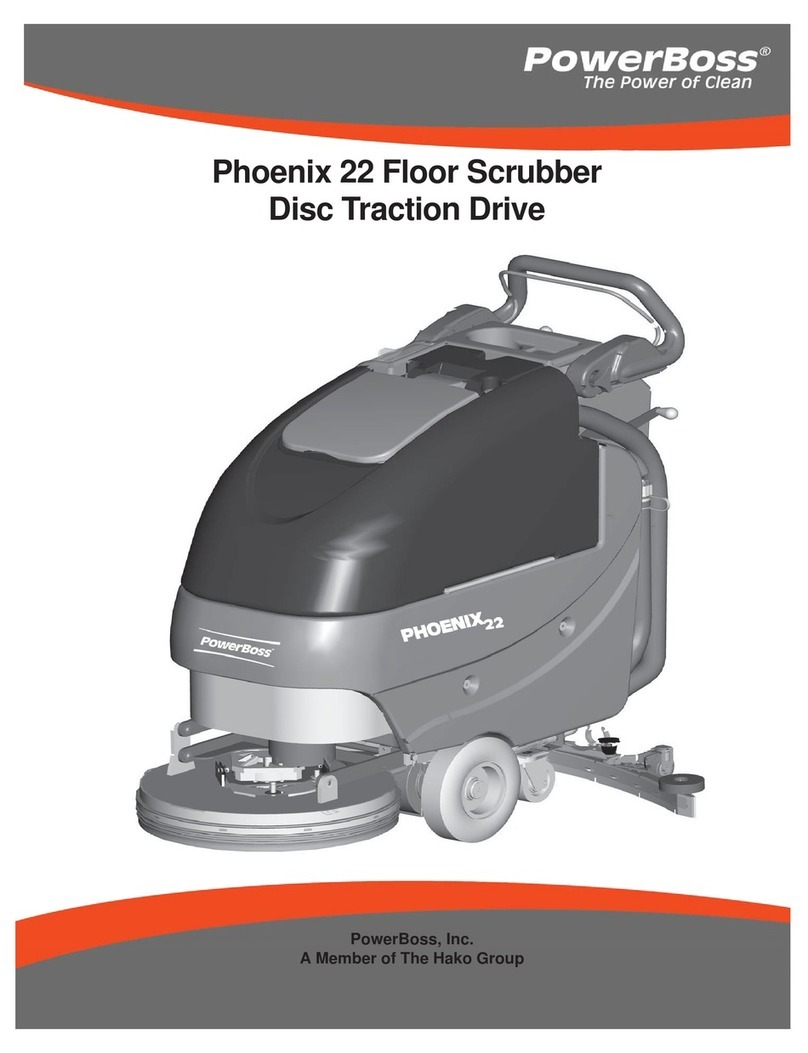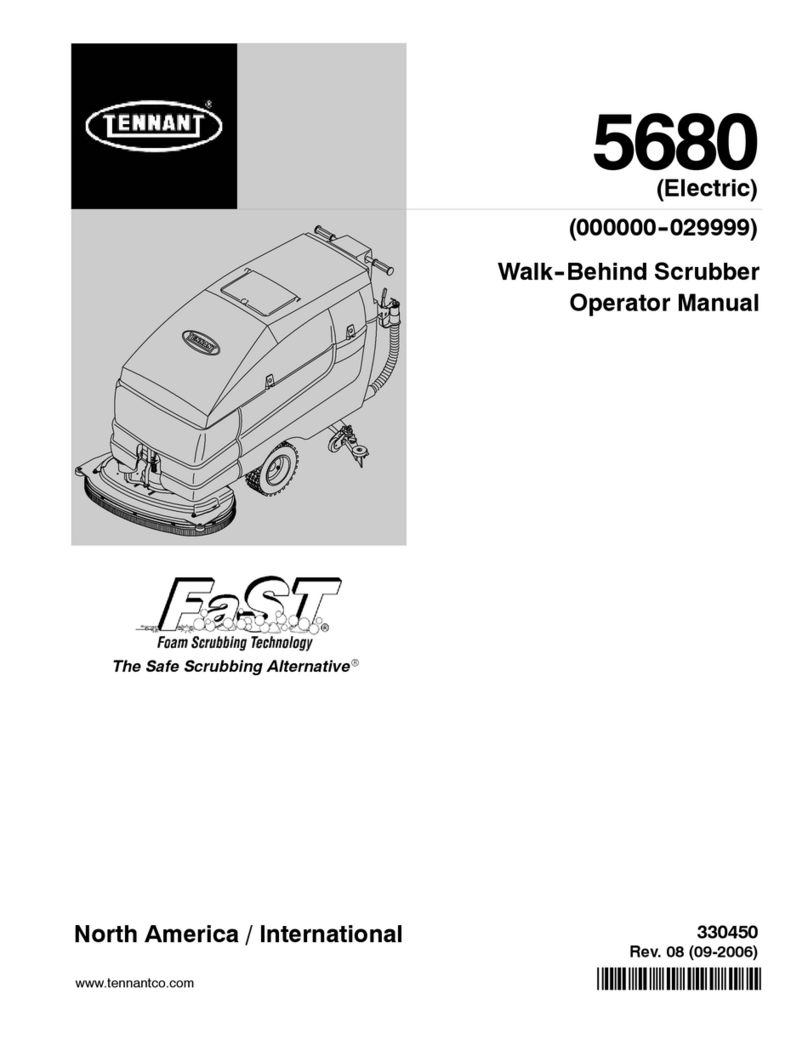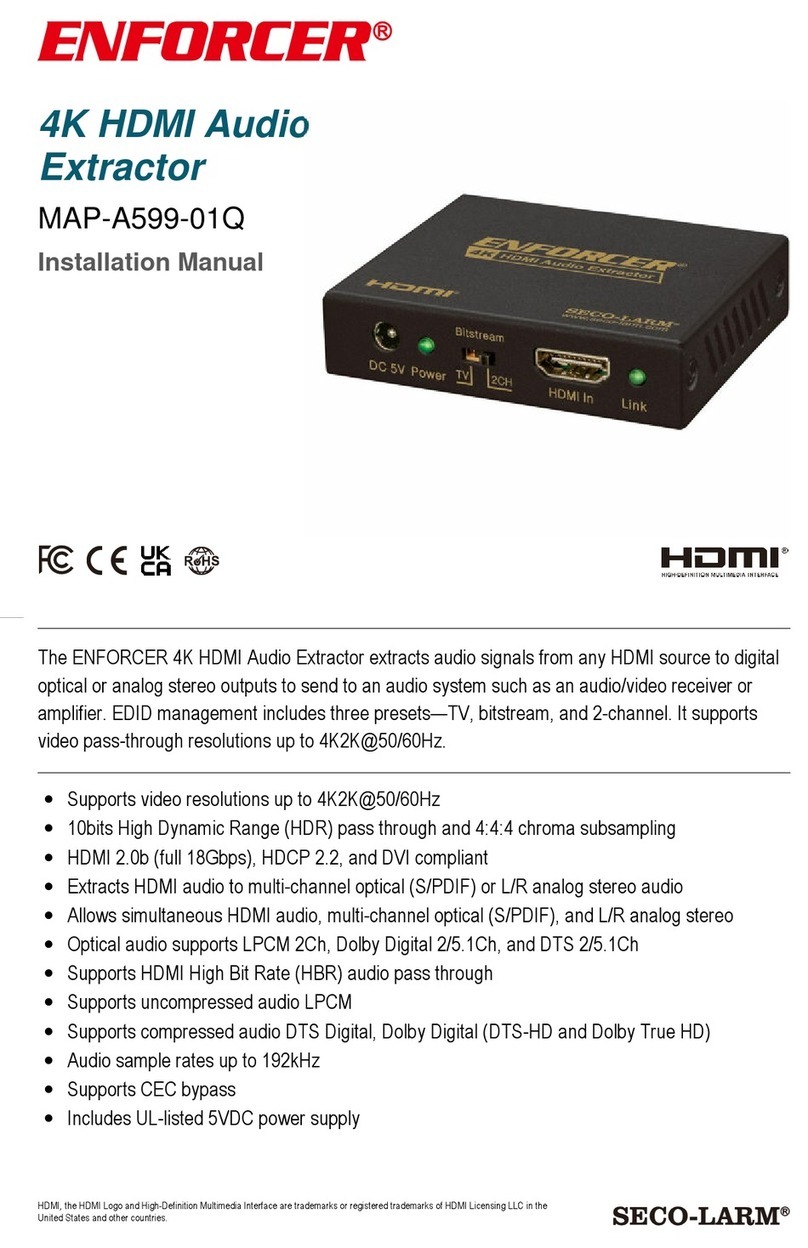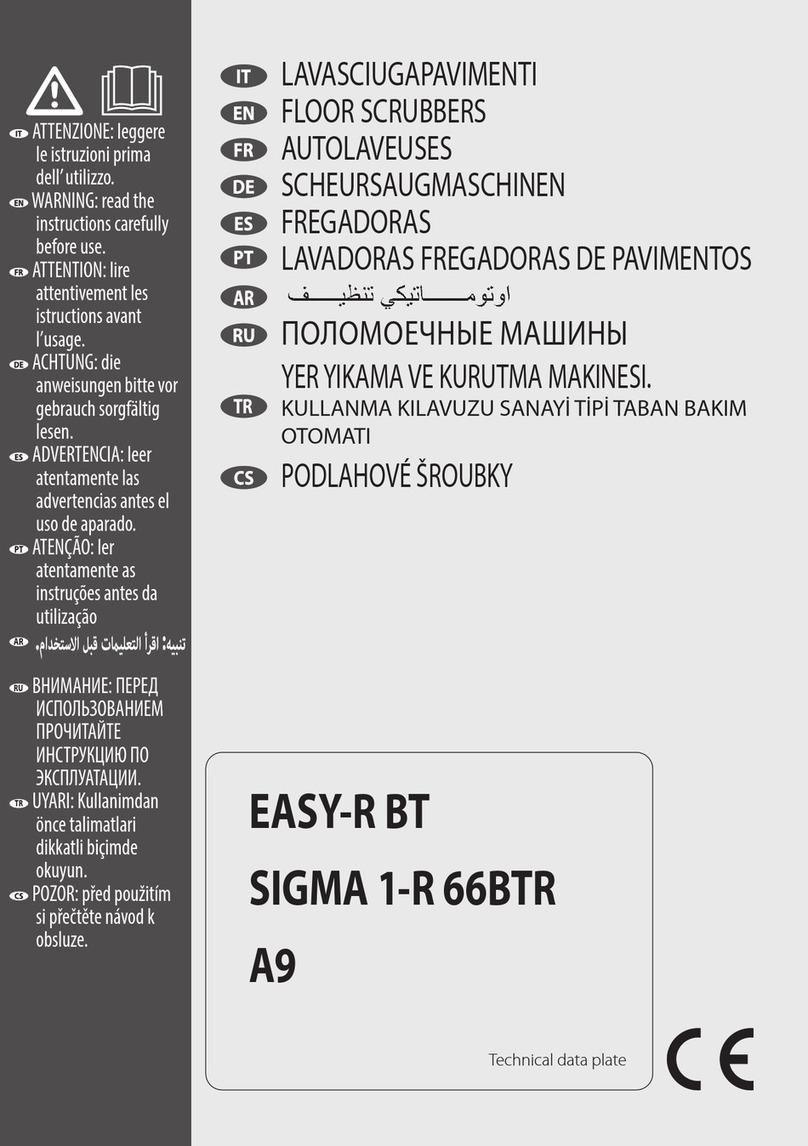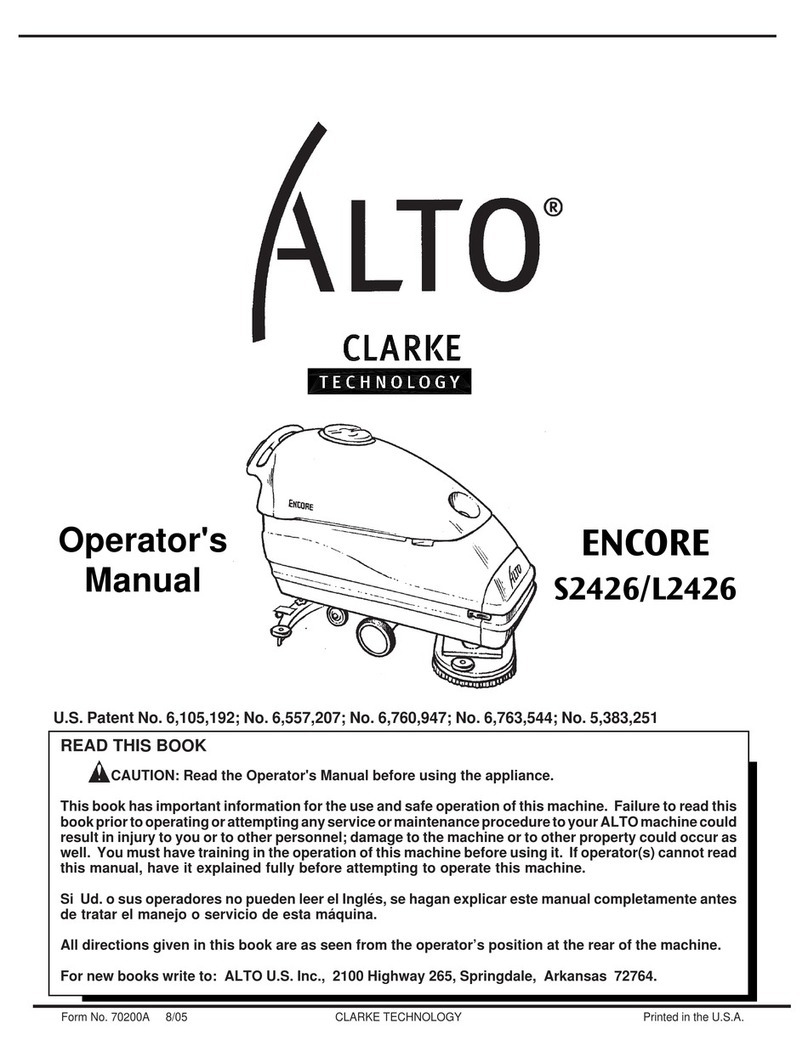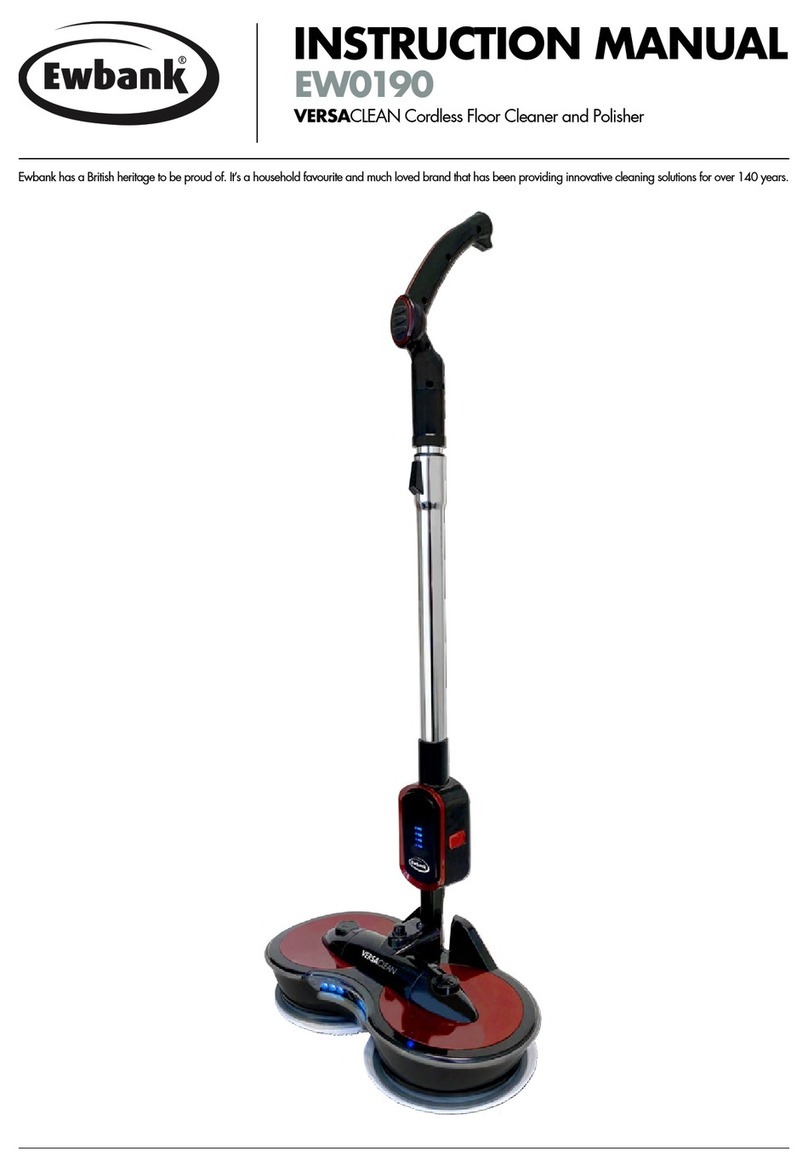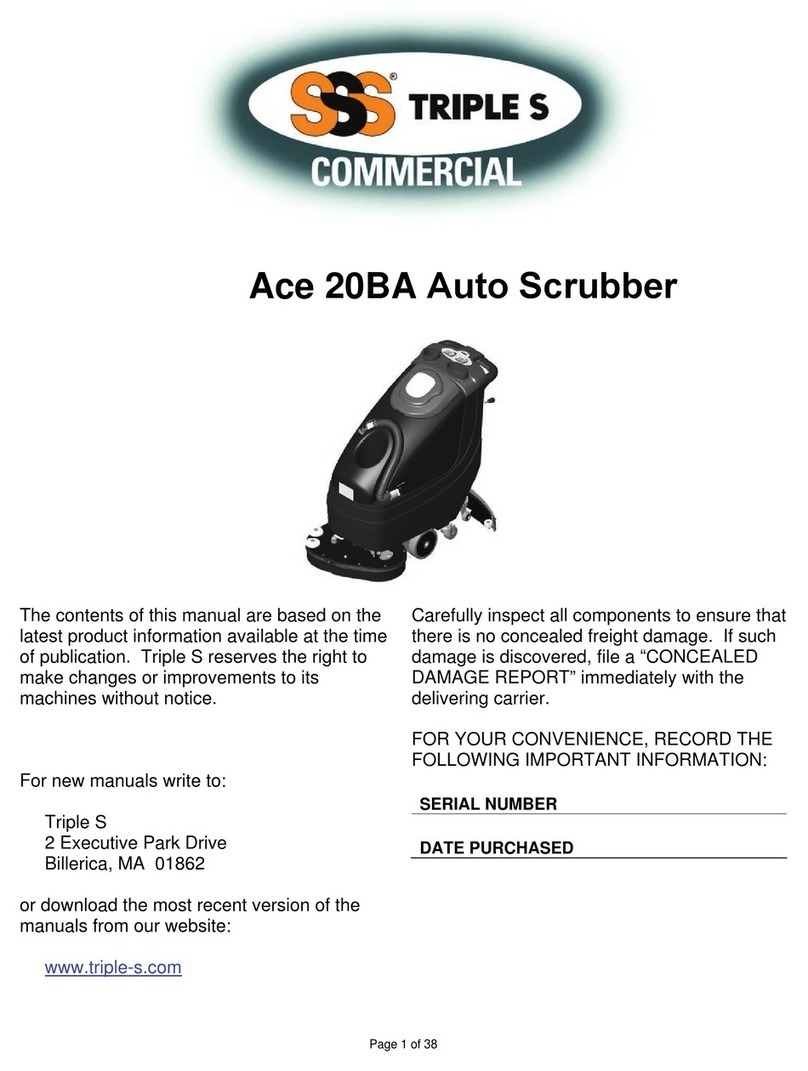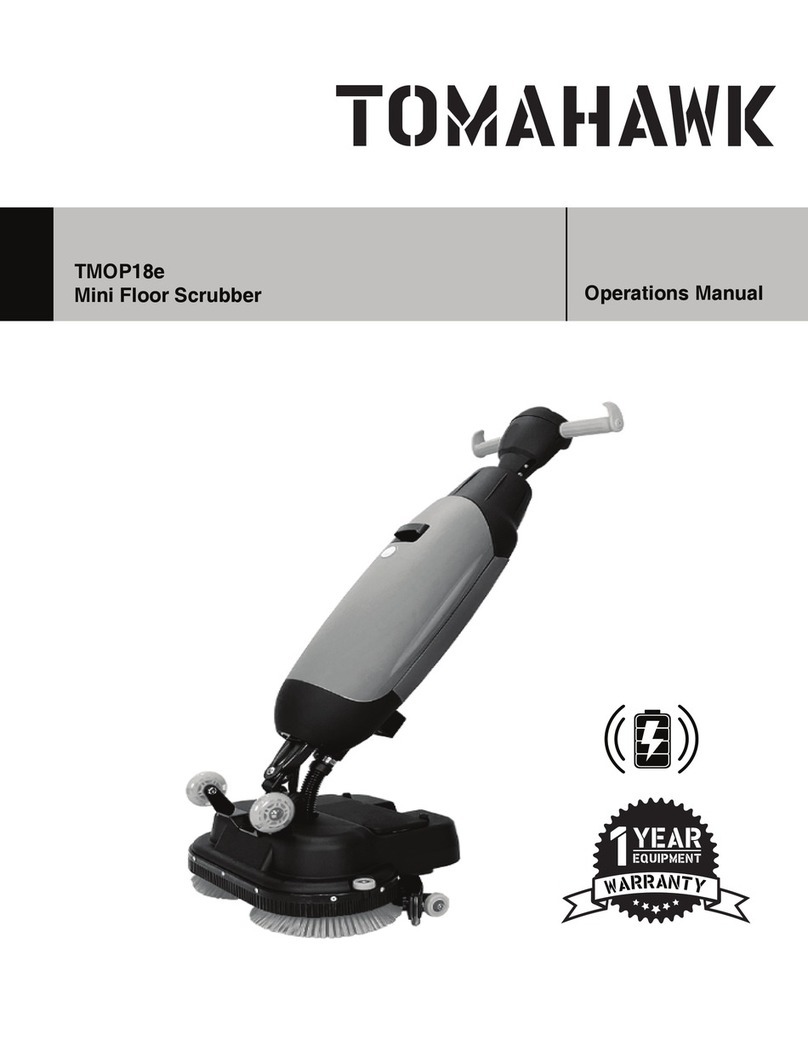DEC RUNNER User manual

RUNNER 1
DEC S.p.A.
Via Omero, 89
41123 Modena - ITALY
Tel. ++39 059 373222
Tel. ++39 059 280010
Fax ++39 059 374199
E-mail: info@dec-modena.com
RUNNER
SCRUBBER-DRYER
USE AND MAINTENANCE MANUAL
TRANSLATION OF ORIGINAL
ATTENTION !
Read the Instruction Manual before using the machine.
This Manual is subjected to international copyright laws.
Unauthorized total or partial divulgation can be legally persecuted!
650501093_A

RUNNER 2
Chapter 1: General warnings ………..................................................................................page 3
Chapter 2: Technical features
paragraph 2/1 : Name, identification and description……………………………………page 4
paragraph 2/2: Warning and instruction labels ……………………………………….….page 6
paragraph 2/3: Technical data and dimensions …………………………………….......page 7
paragraph 2/4: Transport, loading and unloading………………………………………..page 8
Chapter 3 : General instructions
paragraph 3/1: Scope of the Manual and guide for consultation……………………....page 9
paragraph 3/2: Important safety warnings…………………………..............................page 9
Chapter 4 : Preparing for work
paragraph 4/1: Set-up……………………………………………………………………….page 14
paragraph 4/2: Controls …………………………………………………………………….page 16
paragraph 4/3: Operation and Use ……………………………..……………….…………page 18
paragraph 4/4: Inspection before use………………………………………….…………..page 20
paragraph 4/5: Preparing the detergent solution……………………………….…………page 21
Chapter 5 : Using the Scrubber-drier
paragraph 5/1: Switching on the machine……………………………………………..….page 22
paragraph 5/2: Setup – Operation………………………………………………………….page 22
paragraph 5/3: Optimizing the operation…………………………………………………..page 23
paragraph 5/4: Draining the recovery tank………………………………………………..page 23
paragraph 5/5: End of operation………………………………………………………..….page 23
Chapter6:Tableofbrushesanddrivers……………………….…………………………………………....…page 24
Chapter7:Maintenance
paragraph7/1:Generalrules……………………………………………………………………………....page..25
paragraph7/2:Lubricants/OilsTable……………………………………………………………………..page.. 26
paragraph7/3:TighteningtorquesTable………………………………………………………….……....page.. 26
paragraph7/4:Cleaning……………………………………………………………………………..……page.. 26
paragraph 7/5: Cleaning and checking the main components…………..…………...…page 27
Chapter 8: Extraordinary maintenance
paragraph 8/1: Periodic maintenance……………………………………………………..…..…page 30
paragraph 8/2: Troubleshooting……………………………………………………………...…...page 32
Chapter 9: Wiring diagram………………………………………………………………………………...page 33
MAIN INDEX
USE AND MAINTENANCE
INDEX

RUNNER 3
MANUFACTURER’S RESPONSIBILITIES
The Manufacturer shall not accept responsibility for problems, breakage, accidents, etc. due to lack
of knowledge of the instructions in this Manual or failure to apply these.
The same applies to unauthorized modifications, variations and/or installations of accessories.
The Manufacturer declines all liability for damage deriving from:
- Improper use
- Incorrect operations
- Lack of maintenance
- Technical intervention by unskilled persons
- Use of spare parts that are not genuine
SPARE PARTS
For replacement, use exclusively ORIGINAL SPARE PARTS .
Do not wait until the components are worn from use; replacing a component at the right time means
better working of the machine and at the same time saving due to absence of abnormal wear of the
connected components.
TECHNICAL SERVICE
The Manufacturer has a commercial/technical network to provide the Customer with technical
service to help solve problems related to the use and maintenance of the machine.
REQUEST FOR ASSISTANCE
Requests for assistance, if any, must include indication of the type of problem or fault encountered.
The machine serial number must be indicated in the request.
Contact the manufacturer or area dealer for assistance.
WARNING
The manufacturer reserves the right to modify the machine at any moment according to the
technical/commercial requirements; therefore, there may be slight differences between the contents
of the commercial catalogues and the machine delivered.
USE AND MAINTENANCE
MANUTENZIONE
1
-
G
ENERAL
WARNINGS

RUNNER 4
2/1 – NAME, IDENTIFICATION AND DESCRIPTION
NAME AND DESCRIPTION OF THE MACHINE
Electromechanical ride-on scrubber-drier for floors, suitable for washing and drying smooth, uniform
floors covered with grès, cotto, marble, ceramic, clinker, cement, PVC, linoleum, etc., free of steps
or obstacles.
The mechanical cleaning action is performed by rotary brushes the pressure of which on the floor
can be adjusted, depending on the surfaces; the chemical action is performed by the detergent
water solution given out at the centre of the brushes during the machine operating phases. The
suction is brought about by the rear drying unit which consists of a pair of squeegees made of a
special soft material which scrape the pavement, and by means of the depression between the two
squeegees allow the drier to absorb the remaining wash water, leaving the floor clean and dry.
IDENTIFICATION
Plate affixed on the chassis, on the inner part of the safety casing.
USE AND MAINTENANCE
2
-
TECHNICAL FEATURES

RUNNER 5
DESCRIPTION
Posi
tion
Descri
ption
1
Drive wheel
2
Rotary brushes
3
Drying unit
4
Tank for dirty water
5
Detergent solution drainage pipe
6
Detergent solution tank
7
Driver’s seat
8
Co
ntrols
12
3
4
5
6
7
8

RUNNER 6
(Carrying passengers is prohibited)
(Danger of crushing) (Do not repair or record when moving)
No smoking, no using naked flames
Do not create electric arcs or
sparks
Protect eyes
Danger of explosions
Danger: corrosive
substances
Lead batteries may not be discarded in normal
solid waste but as they are made of harmful
materials they must be collected, disposed of
and/or recycled under the protection of current
laws.
Follow the instructions
in the use manual carefully
provided by the manufacturer.
FOR THE BATTERY:
(No unauthorised use)
2/2 – WARNING AND INSTRUCTION LABELS

RUNNER 7
2/3 – TECHNICAL DATA AND DIMENSIONS
Model Runner
Working width mm 860
Floor wiping width mm 1085
Theoretical operating capacity m²/h 4500
Power supply BAT
Total power W 2700
Traction Electric
Brushes
Diameter/Quantity mm/n. 430/2
Motor: Quantity/Power n./W 2 / 400
Brush rotation rpm 160
Load on brushes N 320 - 540
Traction
Motor W 700
Maximum speed km/h 7
Maximum operating gradient %
5
Suction
Motor: Quantity/Power
n./W
2/500
Suction depression mm H
2
O 180
Tanks
Type Double tank
Tank capacity l 145/165
Batteries
Capacity V/Ah 24/450 ( opt.24/320 )
Operating capacity h 3-4
Dimensions
Length x width x height mm 1690x800x1420
Weights kg
Without batteries 340
With batteries 660
Batteries 320
IP Code 23
Noise level
Noise level dB(A) 68
Maximum acceleration value for
operator’s hand/arm system < 2.5 m/s
2
Maximum acceleration value for
operator’s body < 0.5 m/s
2
Electromagnetic compatibility (EMV)
Respect the following limit values in
accordance with production standards
-
Disturbance emissions (EN 50081-1)
-
Resistance to disturbances (EN 50 082-
2)
-
Electrostatic discharges (EN 61000-4-2)

RUNNER 8
2/4 – TRANSPORT, LOADING AND UNLOADING
The machine is set up for being handled using a fork lift truck.
The total weight of the entire machine, packed on a pallet, is 680 kg.
Overall dimensions: height: 1620 mm; width: 1100 mm; length: 1800 mm
Check to make sure that the package contains:
- The scrubber-drier
- The drying unit
- Brush/es
- Use and Maintenance Booklet/CE certificate ( see copy page 36 ).
The packaging material can be retained for future use, if necessary, or disposed off in accordance
with the differential collection criteria.

RUNNER 9
3/1 – SCOPE OF THE MANUAL AND GUIDE FOR CONSULTATION
The scope of this Manual is to describe the working of the scrubber-drier so that the operator can
use it correctly. Failure to observe the use, maintenance and safety instructions can cause harm to
the user, damage to the machine, the surfaces treated, the environment, and result in invalidation of
the warrantee. The symbol in the Manual indicates: “ATTENTION” which must be interpreted as:
“ATTENTION ”: symbol used when a movement, a command,
assembly, etc. in the event of failure to observe the indications given
here can result in harm for persons, and damage to property or the
machinery and its equipment.
3/2 – IMPORTANT SAFETY WARNINGS
SAFETY STANDARDS REGARDING USE OF THE VEHICLE
Read the warnings given in this Manual carefully, since they provide important indications
concerning safety of installation, use and maintenance.
ATTENTION!
The scrubber-drier must be used within the limits indicated; in particular, it is important to
avoid improper use, incorrect moves, and technical operations by unqualified personnel,
use of spare parts that are not genuine, and the necessary maintenance must be carried out.
GENERAL INFORMATION
The ride-on scrubber-drier can only be operated by persons aged 18 and above, and
trained for driving the machine.
The operators must prove their driving capacity and familiarity, specifically with the vehicle
entrusted to them and the contents of the User Manual. The operator must use the vehicle
in compliance with the driving behaviour conforming to road traffic rules.
After unpacking, make sure that the machine is not damaged. Check the tanks, in
particular, to make sure they are not damaged.
Before using the machine, make sure it is in perfect working condition. Pay special attention
to the wheels, the propeller assembly, warning sounds and lights, the battery, the electrical
system, brakes, and steering.
If the machine requires repairs or operating defects are found during use, the person
responsible must be informed immediately. Vehicles with worn, defective brakes etc. must
only be used after they are completely repaired.
USE AND MAINTENANCE
3
-
GENERAL INSTRUCTIONS

RUNNER 10
The driver must not make adjustments or carry out repairs unless he is personally
authorized to do so.
The driver must hold the handwheel with the right hand or left hand as specified by the
standards applicable in the country of use prescribed by the standards concerning road
travel applicable in the country of use. He must have a clear view of the path in which the
vehicle is to circulate, take great care in the presence of pedestrians and other vehicles,
and keep at a safety distance.
The road travel rules must be respected, including the speed limits specified for certain work
areas.
Avoid sudden starts and braking at high speeds.
Do not start the vehicle with the leading wheel completely steered, except when required in
special circumstances. In such cases, start the vehicle very carefully.
Reduce the speed and sound the horn at crossings or other points where visibility is
hindered.
With the vehicle in movement, no part of the driver’s body must project outside the vehicle
outline.
In the presence of other vehicles or pedestrians in the vicinity of the machine, a warning
horn must be sounded before starting a turn.
The machine running speed must be in proportion to the presence, if any, of persons
working in the area of the machine, the visibility, and the condition of the flooring. In any
case, run the machine at such a speed that it can be stopped in complete safety.
In case of danger, act promptly on the stop command.
WARNINGS FOR THOSE NOT USING THE MACHINE:
The driver is responsible for the vehicle during the working hours. Unauthorized
personnel must not be allowed to drive or use the vehicle. It must not be used for
transporting people.
Repairs:
The driver is not authorized to carry out repairs or modifications on the vehicle
unless he is authorized and qualified for the purpose. He can never deactivate the
safety devices or the switches.
Do not use the machine in case of doubt, and contact the nearest Service Centre of
assistance.
In case of faulty working, stop using the machine, do not attempt repairs, and call
the nearest Service Centre. Always ask for replacement with genuine spare parts,
which guarantee the life of the vehicle and your safety.

RUNNER 11
HAZARD AREA
Hazard area means the area in which persons may be in danger from movements of the scrubber-
drier and its equipment, for example, the rear drying device.
No one but the operator in his normal command position can be present in the machine’s working
area. The minimum width of the scrubber-drier must be evaluated taking into consideration the size
of the rear drying unit, which projects out laterally beyond the vehicle outline. Before moving
through passages and door, make sure there is enough space for the vehicle with the drier and the
driver.
Attention: there must be a clearance of at least 50 cm on either side between the vehicle outline
and the persons present in the work area.
Persons in the hazard area
Before start-up and during the operation of the scrubber-drier, the operator must make sure no one
is present in the hazard area.
The operator must immediately stop the operations in progress with the scrubber-drier if there is
someone still present in the hazard area in spite of warning signals.
IMPORTANT SAFETY WARNINGS
ATTENTION !
•Do not use the machine in explosive atmospheres.
•Do not collect hazardous dusts. Do not suck up inflammable liquids or combustible
compounds such as solvents, benzene, and alcohol, however dilute. There is actual
risk of explosion. Do not operate in the presence of solvents or other fuels.
•Do not use the machine in hazardous environments.
•In case of a fire, use powder extinguishers. Do not use water.
•Working parts and area: the vehicle is allowed to circulate only in the predefined, marked
work areas. The machine is only suitable for indoor use: it must not be used outdoors or kept
outside in the damp.
•Visibility while driving: the driver must pay attention to the direction of movement and
ensure perfect visibility of the path to be followed.
•Safety and warning devices: maximum attention must be paid to safety devices, hazard
signals and warnings.
•Transport of goods is not allowed
•Towing is not allowed
•Transporting persons is not allowed

RUNNER 12
IMPORTANT SAFETY WARNINGS
ATTENTION !
•Circulation on sloping sections
Do not use the machine on slopes exceeding that indicated by the Manufacturer. While working
on slopes,, follow the rules given below:
1) Drive the machine slowly and carefully while going up and down the slopes;
2) Take care while steering and reversing the machine on slopes. Avoid excessively sudden
steering and reversing.
3) Operate the machine carefully while working close to ramps, pavements and trap-doors.
A minimum distance at least equal to the width of a wheel must be maintained from the edge.
•Transport in lifts and elevators
1) Before getting the machine into a lift or an elevator, make sure the latter can stand the total
weight of the machine with driver.
2) Move the machine close to the lift or elevator slowly and enter only when the lift or elevator is
level with the floor.
3) After the machine has entered the elevator, turn the relative controls to zero, disconnect the
power supply and apply the parking brake.
•Parking
1) When the machine is parked unmanned, turn the relative controls to zero, disconnect the
power supply, apply the parking brake, and block all accidental, unauthorized movement of the
trolley.
2) When parking the machine, avoid obstructing the entrance and safety exists, stairs, and fire
fighting equipment.
3) Do not park the machine on a slope.
•RECHARGING or replacing the accumulator batteries
ATTENTION: DANGER OF EXPLOSION!
The batteries give out hydrogen while working, and mainly during charging: this gas is highly
explosive in the presence of naked flames.
1) Battery recharging and replacement must be done by specially designated trained qualified
personnel, according to the battery manufacturer’s or the machine manufacturer’s instructions.
These operations can be carried out by the machine driver after prior authorization.
2) Before proceeding with replacement or recharging the battery, position the machine
correctly, apply the parking brake and remove the key from the power switch.
3) While charging the battery, leave the element caps in place to prevent splashing of
electrolyte. Make sure the caps bleed regularly.
4) The battery compartment cover must be kept open to allow dispersion of gas and heat.
5) Avoid the presence of naked flames, sparks and electric arcs in the areas meant for the
battery recharge. Do not smoke.

RUNNER 13
6) Operate in a ventilated room.
7) Keep tools and other metal objects away from the upper surfaces of uncovered batteries.
8) Keep the upper surfaces of the elements clean and make sure the battery terminals are
clean, slightly coated with Vaseline and locked tight.
9) Never replace the machine battery with other batteries having different voltage, weight and
dimensions.
10) When acid is used from a container, use a support that can be inclined or a siphon. When
diluting concentrated sulphuric acid to prepare the electrolyte, always add acid to the water and
not water to the acid.
ATTENTION: DANGER OF BURNS!
11) The batteries contain acid which must not come into contact with the eyes, skin, and
clothes. Wash the acid splashes, if any, thoroughly immediately with clean water and see a
doctor, if necessary. Always wear protective clothing and glasses while working on the
batteries.
12) Do not spill or touch the battery acid. Spilt battery acid can be neutralized with a sodium
hydroxide solution (SODA).
.
OTHER IMPORTANT WARNINGS FOR CORRECT USE
1) Use only brushes supplied with the machine or indicated by the Manufacturer in the Manual
(see Tab. 6/1 on page 24 , Chap. 6 of the Manual). Using other brushes will affect the safety.
2) Place the doors and covers as indicated in the instruction manual before using the appliance.
3) Use exclusively non-foaming detergents
4) Avoid mixing different types of detergents as this can cause production of harmful gases.
5) The storage temperature must be between – 5 °C and + 45 °C.
6) The optimum operating temperature must be between 0 °C and 40 °C.
7) The machine must be used with moisture rates between 30% and 95%.
8) Do not use acid solutions which can damage the machine.
9) Avoid using the brushes with the machine stopped as this can damage the floors.
10) Affix warning notices to indicate wet floors.
11) For cleaning and maintenance operations, consult the “Maintenance and cleaning”
paragraph in this manual.
12) Do not wash the machine with high pressure water jets since even the smallest amounts of
water entering the protected systems can cause damage.
•Scrapping
ATTENTION!
The machine must not be dumped as it contains toxic-harmful substances subjected to
regulations which envisage disposal at special centres.

RUNNER 14
4/1 – SET UP
The machine is packed for shipment, placed on a pallet and fixed to it by means of two wooden
wedges to block the wheels and a transverse strap, to the floor. The machine is then covered with
in a heat-shrink plastic bag. On receiving the package, cut the bag, remove the wooden wedges
and the strap, then lower the machine from the pallet using a special ramp.
The machine is shipped with the floor drier dismantled and the batteries mounted, to limit the size of
the package.
If ordered without batteries, insert them by positioning as shown below; then connect the cables
supplied, taking great care to connect the poles.
Follow the layout shown here.
ATTENTION: Incorrect connection can damage the electrical system
irreparably!
++
-
-
+
-
+
-
4
-
PREPARING
FOR WORK
USE AND MAINTENANCE
4 6V 450 Ah
batteries
(320 Ah opt.)

RUNNER 15
TO ASSEMBLE THE VARIOUS PARTS, FOLLOW THE
INSTRUCTIONS GIVEN BELOW
A
–
Squeegee
B
–
B ushes
TUBE
Brush-
holder head
2
-
Insert the two squeegee
rubber pins in the holes
in the carriage.
3
-
Fit the two cotters R
in the holes in
the pins
1
-
Lift the carriage by
means of switch D
(next page)
4
-
SQUEEGEE
S
QUEEGEEHOLDER CARRIAGE
Lift the brush-holder head by means of switch E,
position
the brushes under the head and in line with the drive
pulleys, then raise and manually fix the brushes in the
head by turning them through 20°.
Note that, during the washing phase, the brushes rotate
in the direction shown in the Figure, but the
y must be
turned in the opposite direction for fixing them to the
head.
Connect the suction
pipe in the tube to the
squeegee

RUNNER 16
4/2 – CONTROLS
ATTENTION!
The scrubber-drier must be used within the limits indicated; in particular, it is important to
avoid improper use, incorrect moves, and technical operations by unqualified personnel,
use of spare parts that are not genuine, and the necessary maintenance must be carried out.
ATTENTION:
A safety device automatically cuts off the traction circuit when the driver leaves his seat.
A) Switching On
B) Instrument to indicate:
-b1 Battery charging status
-b2 Hours of use
C) Start lever
D) Suction and lifting of squeegee
E) Lifting-lowering brushes
F) Solution flow
G) Release brushes
H) Horn
A
B
E
G
H
F
C
D
B
b1
b2

RUNNER 17
CONTROLS
I ) Steering wheel:
wheel with knob for operation using one hand. Clockwise rotation of the knob will steer the wheel to
the right with respect to the direction of forward movement ;turning the knob anticlockwise will steer
the wheel to the left.
L) Acceleration pedal
M) Brake pedal
O) Battery connection plug-socket
P) Flashing light. On when the ignition key is turned.
Q) Solution flow regulator valve
R) Seat

RUNNER 18
4/3 – OPERATION AND USE
A) SWITCHING ON:
The key on the dashboard inhibits machine operation; it is good practice to turn it off when the
machine is not being used.
It is obligatory to remove the key when the machine is parked in a place open to visitors
(for example supermarkets)
In position 1 the key powers the electric circuit and automatically activates the tower light.
B) CIRCULAR INDICATOR INSTRUMENT:
The instrument is provided with 2 indicators.
b1 – The upper one shows the battery charge status by means of 10 red LEDs which light up one at a
time: when the last LED to the right lights up, it means the battery is charged by 100%; when the fifth
LED lights up it means the battery charge is 50%, in other words, progressive lighting up of the LEDs
from right to left indicates progressive discharge of the batteries while the vehicle is being used .
b2 - The lower indicator shows the number of machine operating hours.
C) OPERATING LEVER:
It has 3 positions: the vertical position indicates idle condition; pushing the lever forwards will cause the
vehicle to move forwards, and the machine can bereversed by pushing the lever backwards.
D) 2-position SQUEEGEE SWITCH:
In the Up position, the lifting of the squeegee is enabled and in the down position the squeegee is
lowered and the suction is activated.
E) BRUSHES SWITCH
It has 3 positions. In the central position, the brushes are lifted. In the up position, the brushes are
brought in contact with the ground with a predefined load. In the down position, the pressure of the
brushes on the ground is increased, by a predefined quantity.
F) SOLUTION FLOW SWITCH
It has 3 positions: in the up position ( I ), solution is let out through a cock provided for the purpose
(Q) regulating the flow from 0 to 4 litres/min; in the down position ( II ), the solution flow is regulated
from 4 to 8 litres per minute.
The solution however only flows out when the accelerator is used.
.
G) BRUSHES DISCONNECT PUSHBUTTON
If the pushbutton is pressed, after the brushes are raised from the ground by means of switch (E),
the brushes are disconnected.
.G)GG To connect the brushes, stand in front of the drive pulley, then move the machine so that the central hole
on the brush is lined up with the centre of the pulley, then lift the brush manually and lock it on the head
by turning it through approx. 20°.Then lower the head to the ground by means of switch(E ).
H) HORN PUSHBUTTON
I ) DRIVING WHEEL
L) ACCELERATOR PEDAL
M) SERVICE BRAKE PEDAL
The mechanicaldrum brake acts on the rear wheels.
There are other ways for braking the machine:
- Braking by release: releasing the accelerator will cause the traction motor to brake the machine
until it comes to a stop
- Reverse current braking (reversal)
On reversing, the traction motor will stop the vehicle more energetically.

RUNNER 19
N) PARKING BRAKE
The electromechanical immobilization mechanism acts automatically and consequently keeps the
vehicle in the braked position switching off the key .
O) PLUG-SOCKET FOR CONNECTING THE BATTERY TO THE VEHICLE
The batterysocket is used for connecting the battery to the vehicle’s electrical system.
The socket and plug are inserted by pressing in the obligatory direction.
The battery plug must be disconnected from the system and connected to the battery charger for
recharging operations.
ATTENTION !
All the elements are positioned on the scrubber-drier for easy operation by the operator, so that
removing the plug will cause sure disconnection of the vehicle from the power supply. This device
must be used in case of a short circuit or poor functioning of the operating commands and for
maintenance operations.
P) TOWER LIGHT
Q) SOLUTION REGULATOR COCK
It is positioned under the vehicle base and makes it possible to regulate the flow rate of the solution to
be used on the floor. The flow rate can be adjusted between 0 to 4 l/min or from 4 to 8 l/min depending
on the position of switch F). Turning the lever clockwise will increase thesolution flow.
R) SEAT
Adjust the position of the seat longitudinally before using the scrubber-drier to make working safe and
more comfortable.

RUNNER 20
4/4 – INSPECTION BEFORE USE
CONDITION OF THE BATTERY CHARGER AND COMMISSIONING
The Runner series of scrubber-driers are battery-powered. The batteries accumulate the electrical
energywhich is transferred to the motors as and when it is required.
The battery charger makes it possible to use the machine correctly: with the batteries charged by
100% the last LED to the right of the instrument lights up. It is possible to work until the batteries
have at least 50% charge, i.e. until the fifth LED lights up. After this the battery must be recharged.
Therefore, before starting work, check the condition of the battery charge bearing in mind that the
correct charge status is only indicated with a motor running.
•Do not discharge the batteries beyond 75 % of the rated capacity
•Always make sure that the power supply is suitable for the battery charger power draw.
•Pay special attention to the WARNINGS on pages 12 and 13.
•Check to ensure the correct level of electrolyte, If the electrolyte in one or more elements of the
battery is below the minimum, top up to the minimum level.
•Before starting the battery recharge phase, check to make sure the machine is switched off
correctly, the key has been removed and the battery compartment cover is lifted.
•To start battery charging, connect the plug (see fig. O on page 17 of the Manual) to the battery
charger. The machine cannot be started up or used during the battery recharge phase.
•Do not carry out any operation on the machine while the battery is being charged.
•Check to make sure that all the tubes are fitted in the correct inlet openings, check to make
sure the recovery water tank is closed correctly and sealed.
•Make sure the electrolyte temperature does not exceed 40 °C (take special care in summer
and in rooms where the environmental temperature is high)
•For the first 4 – 5 cycles, recharge the batteries after 3 – 4 hours of operation.
•The new batteries reach their maximum capacity after about 10 work cycles.
•Never leave the batteries flat. They must be recharged after a long shutdown period.
•In low operating temperatures, do not delay recharging the batteries as the electrolyte may
freeze.
Table of contents
Popular Scrubber manuals by other brands
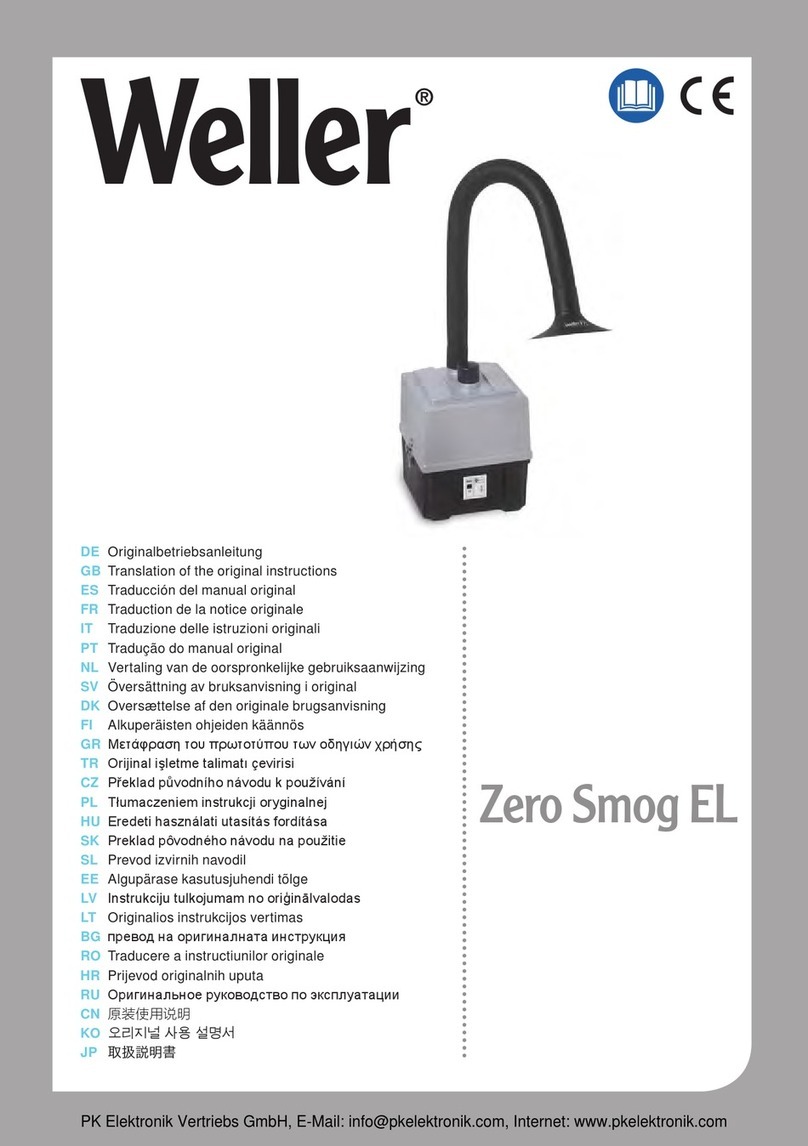
Weller
Weller Zero Smog EL Translation of the original instructions
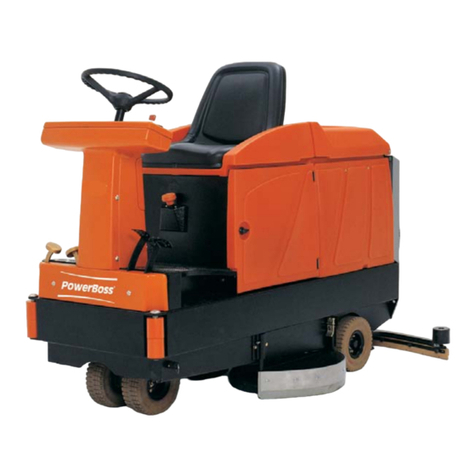
PowerBoss
PowerBoss Admiral 36 user manual
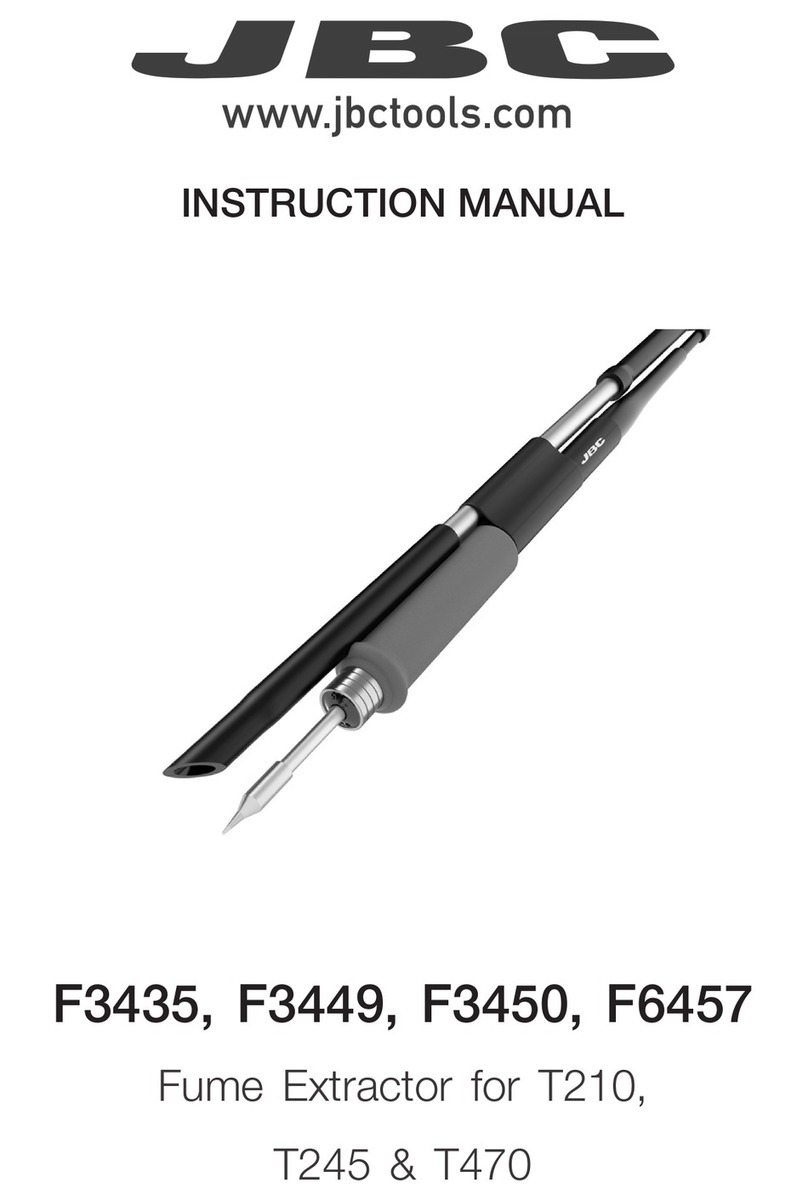
jbc
jbc F3435 instruction manual

Superabrasive
Superabrasive LAVINA ELITE Seies user manual
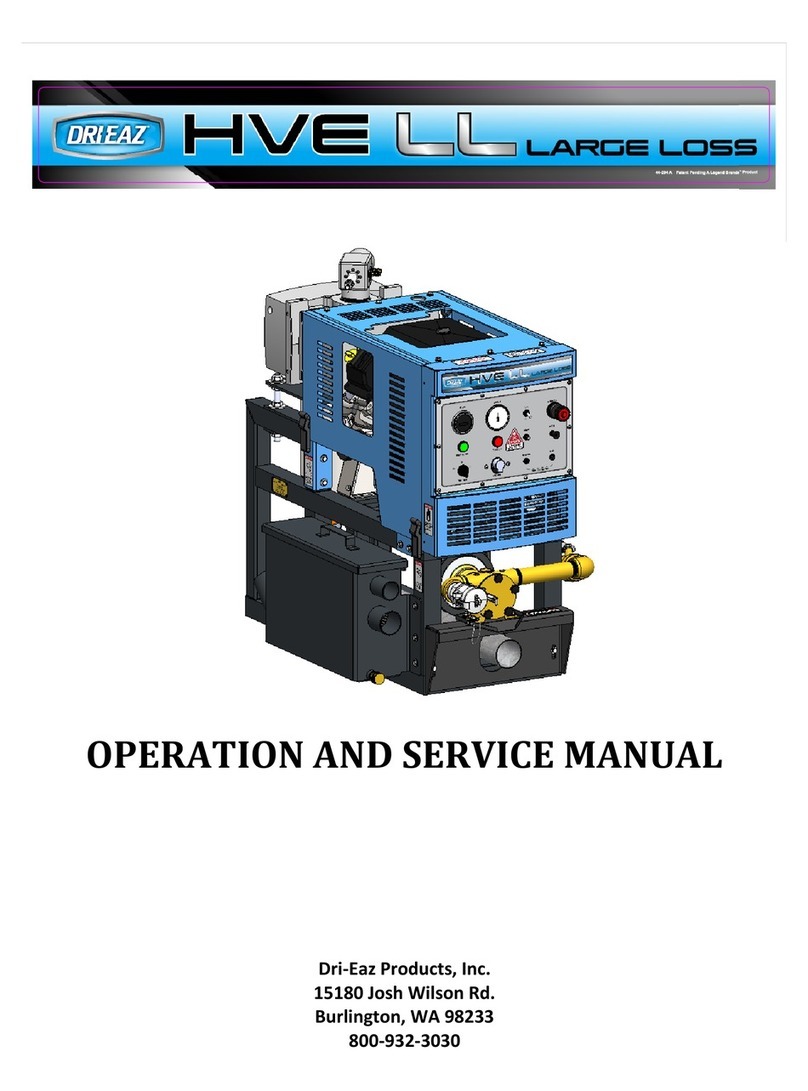
Drieaz
Drieaz HVE-LL Large Loss Operation and service manual

Tennant
Tennant SweepSmart S20 ELECTRIC Instruction bulletin
